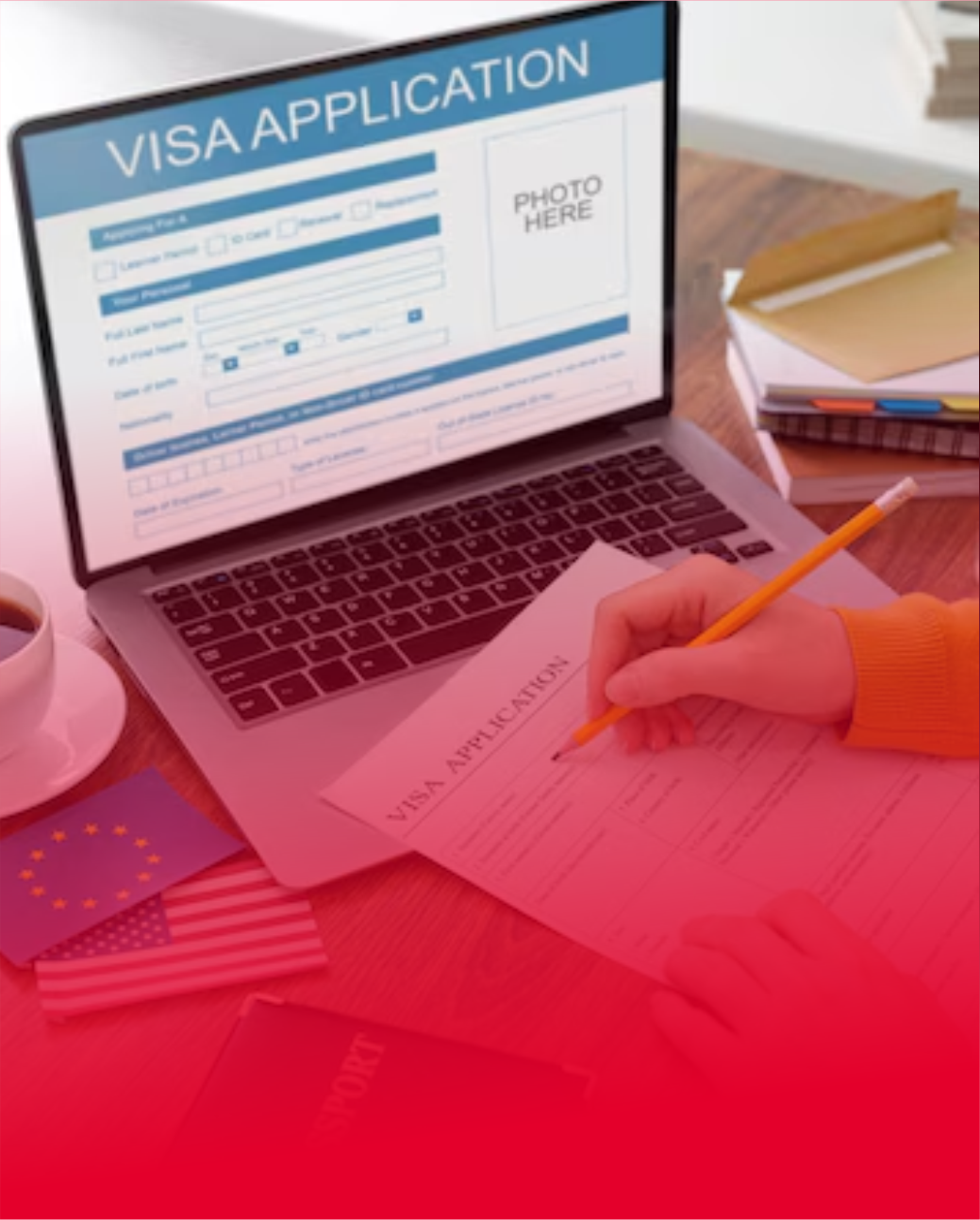
August 23, 2024


Step-by-Step Guide to the Australian Visa Application Process
Applying for an Australian visa can be a complex and daunting task, especially with the
numerous visa types and ever-evolving immigration policies. However, with the right
guidance, you can navigate the process more smoothly and increase your chances of
success. In this comprehensive guide, we'll walk you through the step-by-step process of
applying for an Australian visa, ensuring you have all the information you need to get started.
1
Determine the Type of Visa You Need
The first step in your visa application journey is to determine which visa category best suits
your circumstances. Australia offers a wide range of visas, including:
Skilled Migration Visas: For individuals with qualifications and skills in demand in Australia.
Family Visas: For those wishing to join family members who are already Australian citizens or permanent residents.
Student Visas: For those looking to study at an Australian educational institution.
Business and Investment Visas: For entrepreneurs and investors interested in establishing or expanding a business in Australia.
Visitor Visas: For short-term stays, such as tourism or business visits.
Each visa type has its own set of requirements, so it's crucial to research and choose the
one that aligns with your goals.
2
Check Your Eligibility
Once you've identified the appropriate visa type, the next step is to check your eligibility.
This involves reviewing the specific criteria for the visa, which may include:
Age Requirements: Some visas have age limits.
English Language Proficiency: You may need to demonstrate your ability to speak, read, write, and understand English.
Skills and Qualifications: For skilled visas, you'll need to have your qualifications and work experience assessed by a relevant assessing authority.
Health and Character Requirements: All visa applicants must meet Australia's health and character standards, which may include medical examinations and police checks.
Use tools like the Department of Home Affairs’ Visa Finder to help you assess your eligibility.
3
Gather Required Documentation
Once you confirm your eligibility, it's time to gather all necessary documentation. This step
is critical, as incomplete or incorrect documentation can lead to delays or visa rejection.
Common documents include:
Passport: A valid passport with sufficient validity.
English Test Results: Proof of your English language proficiency (e.g., IELTS, PTE).
Skills Assessment: Official assessment of your qualifications and work experience (for skilled visas).
Health and Character Documents: Medical examination results and police clearance certificates.
Proof of Funds: Evidence that you have sufficient funds to support yourself during your stay in Australia (for some visa types).
Sponsorship Documents: If applicable, proof of sponsorship from an employer, family member, or educational institution.
Ensure that all documents are up-to-date, certified, and translated into English if required.
4
Gather Required Documentation
For certain visa types, particularly skilled migration visas, you’ll need to submit an
Expression of Interest (EOI) through the SkillSelect system. The EOI is a way of showing
your interest in applying for a visa and is not a visa application itself. In your EOI, you'll
provide details about your skills, qualifications, and experience.
Your EOI will be ranked against other candidates based on the points system. If you're selected, you'll receive an invitation to apply for a visa.
Your EOI will be ranked against other candidates based on the points system. If you're selected, you'll receive an invitation to apply for a visa.
5
Lodge Your Visa Application
Once you've been invited to apply or if your visa type does not require an EOI, you can
lodge your visa application. This is done online through the ImmiAccount portal on the
Department of Home Affairs website.
During this step, you'll need to:
During this step, you'll need to:
Complete the application form accurately.
Upload all required documents.
Pay the applicable visa fee.
Submit biometric data if required (fingerprints, photos).
It’s essential to double-check all the information provided before submitting your
application, as errors can lead to delays or rejections.


6
Attend Health Examinations and Provide Biometrics
Depending on your visa type, you may be required to undergo a health examination and
provide biometric information (such as fingerprints and photographs). These steps are
usually completed after submitting your application, and you'll be notified if they are
necessary.
Health examinations must be conducted by a panel physician approved by the Australian Government. Your visa application cannot be processed until these checks are completed and the results are submitted.
Health examinations must be conducted by a panel physician approved by the Australian Government. Your visa application cannot be processed until these checks are completed and the results are submitted.
7
Wait for a Decision
After submitting your application, all that’s left is to wait for a decision. Processing times
vary depending on the visa type, the complexity of your case, and the time of year. You can
track the status of your application through your ImmiAccount.
During this period, the Department of Home Affairs may contact you for additional information or documentation, so it's important to respond promptly to any requests.
During this period, the Department of Home Affairs may contact you for additional information or documentation, so it's important to respond promptly to any requests.
8
Receive Your Visa Decision
Once a decision has been made on your application, you’ll be notified via email. If your
visa is granted, the notification will include your visa grant number, the visa start date, and
any visa conditions you need to be aware of.
If your application is refused, the notification will include the reasons for the refusal and information about your review rights, if applicable.
If your application is refused, the notification will include the reasons for the refusal and information about your review rights, if applicable.
9
Prepare for Your Move to Australia
Congratulations! If your visa has been granted, you can start making arrangements for
your move to Australia. This may include booking flights, finding accommodation, and
researching the area where you’ll be living.
Remember to comply with any visa conditions, such as arriving in Australia by a specific date or living in a particular region.
Remember to comply with any visa conditions, such as arriving in Australia by a specific date or living in a particular region.
Conclusion:
Applying for an Australian visa is a significant step towards achieving your dream of living, working, or studying in Australia. While the process can be challenging, following this step- by-step guide will help you stay organised and increase your chances of success. If you find the process overwhelming, We at Nestaway can provide expert guidance and support throughout your application journey.
Applying for an Australian visa is a significant step towards achieving your dream of living, working, or studying in Australia. While the process can be challenging, following this step- by-step guide will help you stay organised and increase your chances of success. If you find the process overwhelming, We at Nestaway can provide expert guidance and support throughout your application journey.




